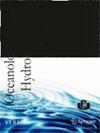富氢水是否能减轻虹鳟(Oncorhyncus mykiss)的MP毒性?通过ROS/GSH/MDA途径监测血液学、DNA损伤和细胞凋亡
IF 1
4区 环境科学与生态学
Q4 OCEANOGRAPHY
引用次数: 0
摘要
摘要尽管记录鱼类中存在微塑料(MP)的研究数量正在增加,但专注于其解毒的研究非常有限。在本研究中,虹鳟(Oncoryncus mykiss)在喂食MP(15%聚丙烯[PP]+15%聚乙烯[PE])2个月后被随机分为两组。在半静态条件下研究了第I组鱼在不施用任何MP的情况下(PP+PE)的MP排泄量,以及第2组施用富氢水(HRW)的MP的排泄量(PP+PE+HRW)21天。使用阳性和阴性对照组(对照组[无治疗,无PP、PE或/和HRW]和仅HRW组)也比较了这种效果。在这个方向上,确定了以下内容:PP+PE对水生生物的慢性毒性,HRW作为一种可能的血液组织治疗方法的毒性机制和效果;与其他组织(肝、鳃和脑组织)的血液学指标([RBC计数[RCB]、白细胞计数[BC]、血红蛋白值[Hb]、红细胞比容比[Hct]、血小板计数[PPLT]、每红细胞血红蛋白计数[MCHC]、每红细胞平均血红蛋白量[MCH]和平均红细胞体积[MCV])的氧化应激反应(过氧化氢酶[CAT])、谷胱甘肽过氧化物酶(GPx),研究了谷胱甘肽还原酶(GR)、超氧化物歧化酶(SOD)、谷胱甘肽(GSH)、活性氧产物(ROS)、丙二醛(MDA)水平、DNA损伤(8-OHdG:8-羟基-2-脱氧鸟苷)和细胞凋亡(caspase 3)水平。此外,还测定了乙酰胆碱酯酶(AChE)活性,该活性在大脑的神经毒性途径中很重要。还获得了塑料(PP/PE)在靶组织(肌肉、肝脏、鳃和胃肠道)中的存在。结果表明,PP+PE对三种组织均有毒性作用。MP对抗氧化酶活性具有抑制作用,对MDA、ROS、8-OHdG和胱天蛋白酶3水平具有诱导作用。HRW通过控制ROS/GHS/MDA途径对MP介导的O.mykiss脑、血液、鳃和肝脏毒性具有减轻作用。HRW可以被认为是一种经济有效且环保的治疗方法,可以保护鱼类免受摄入微塑料产生的氧化损伤。本文章由计算机程序翻译,如有差异,请以英文原文为准。
Does hydrogen-rich water mitigate MP toxicity in rainbow trout (Oncorhyncus mykiss)? Monitoring with hematology, DNA damage, and apoptosis via ROS/GSH/MDA pathway
Abstract Although the number of studies documenting the presence of Microplastics (MP) in fish is increasing, research studies focused on its detoxification are very limited. In this study, rainbow trout (Oncorhyncus mykiss) were randomly divided into two groups after being fed with MPs (15% polypropylene [PP] +15% polyethylene [PE]) for 2 months. MP excretion without any application (PP+PE) in group I fish, and excretion of MPs with hydrogen-rich water (HRW) application (PP+PE+HRW) in group 2 were investigated under semi-static conditions for 21 days. This effect was also compared by using positive and negative control groups (Control [no treatment, free PP, PE or/and HRW] and only HRW group). In this direction, the following were determined: PP+PE chronic toxicity in aquatic organisms, the toxicity mechanism and the effect of HRW as a possible treatment method in blood tissue; with hematological indices ([RBC count [RBC], leukocyte count [WBC], hemoglobin value [Hb], hematocrit ratio [Hct], platelet count [PLT], hemoglobin count per erythrocyte [MCHC], mean hemoglobin amount per erythrocyte [MCH] and mean erythrocyte volume [MCV]) in other tissues (liver, gill and brain tissue) oxidative stress response (catalase [CAT]), glutathione peroxidase (GPx), glutathione reductase (GR), superoxide dismutase (SOD), glutathione (GSH), reactive oxygen products (ROS), malondialdehyde ([MDA] levels), DNA damage (8-OHdG: 8-Hydroxy-2-Deoxyguanosine), and the apoptosis (caspase 3) levels were investigated. In addition, acetylcholinesterase enzyme (AChE) activity, which is important in neurotoxicity pathways in the brain, was determined. The presence of plastics (PP/PE) in target tissues (muscle, liver, gill and gastrointestinal tract) was also obtained. The results showed that PP+PE caused toxicity in all three tissues. MPs showed an inhibiting effect on antioxidant enzyme activities and an inductive effect on MDA, ROS, 8-OHdG, and caspase 3 levels. HRW showed a mitigating effect on MP-mediated toxicity in O. mykiss brain, blood, gill, and liver by controlling the ROS/GSH/MDA pathway. HRW can be suggested as a costeffective and eco-friendly curative for the protection of fish from the oxidative damages produced by the ingestion of microplastics.
求助全文
通过发布文献求助,成功后即可免费获取论文全文。
去求助
来源期刊
CiteScore
1.70
自引率
11.10%
发文量
8
审稿时长
>12 weeks
期刊介绍:
Oceanological and Hydrobiological Studies is an international journal published by the Institute of Oceanography, University of Gdańsk in Poland. The journal has 4 issues per year and contains papers on all aspects of the marine environment and hydrobiology. All manuscripts are reviewed by editors and independent experts. Based on the referees'' recommendations, the Editor will make a decision on whether to accept a contribution. All articles are published in English. The journal is open to all matters concerning the water environment, thus providing the readers with a wide spectrum of topics in every issue.

 求助内容:
求助内容: 应助结果提醒方式:
应助结果提醒方式:


